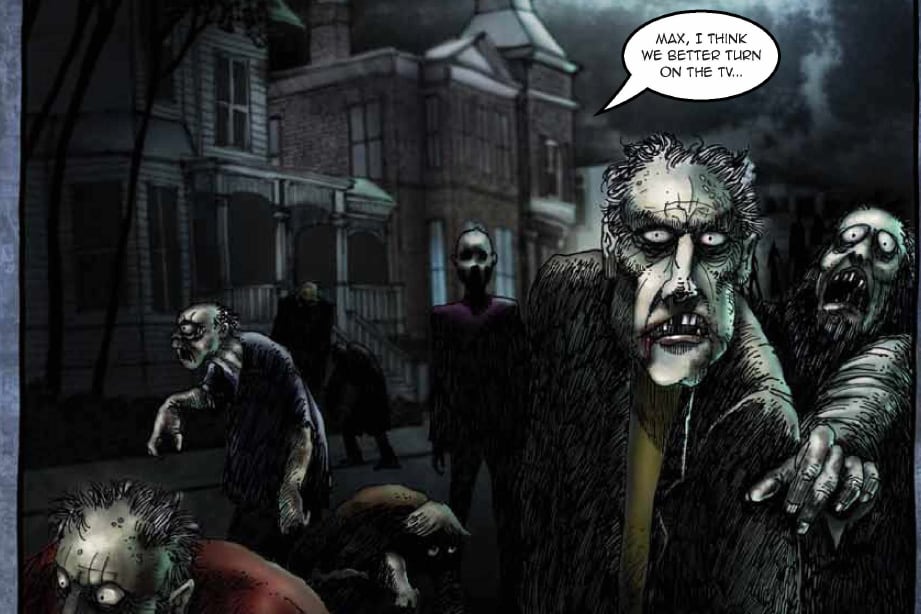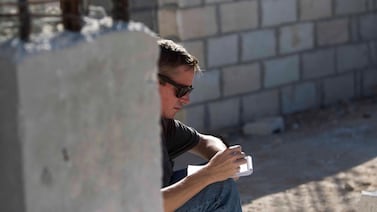Dr. Jay K. Varma is a special contributor to Healthbeat. Public health, explained: Sign up to receive Healthbeat’s free national newsletter here.
In 2011, the Centers for Disease Control and Prevention decided it wasn’t enough to keep humans alive. It was also going to make sure the dead stayed that way.
The CDC’s Office of Public Health Preparedness and Response published a graphic novel called “Preparedness 101: Zombie Pandemic.” In this story, a fictional couple watch news reports of a mysterious pathogen spreading across the United States. The pathogen turns out to be a virus that turns people into zombies, and the CDC leads an effective national response. The story was meant to teach Americans about the importance of being prepared for health emergencies and the role of CDC in responding.
Unfortunately, as we approach Halloween 2025, I am more fearful of what’s happening to CDC than I am of ghosts and vampires. If the zombie outbreak from “Preparedness 101” happened this Halloween, the outcome would be far worse.
Patients rush to emergency departments with first signs of zombie illness
In CDC’s graphic novel, a couple, Julie and Todd, see news reports about a strange illness emerging in the Southeast. People are stumbling into emergency departments, confused and feverish, then suddenly becoming violent. The first nurse is bitten before anyone realizes an outbreak has started.
In this scenario, astute clinicians would have called state health departments, and they would have immediately called the CDC – a seamless network for early detection of new health threats. Syndromic surveillance systems supported by the CDC would immediately detect a surge in emergency department visits for an unusual combination of symptoms.
Today, in a change from previous administrations, CDC staff are prohibited during the government shutdown from even speaking with state health officials. Even if the federal government were open, I suspect there would be insufficient staffing to assess the situation adequately. In the early stages of a zombie attack, CDC requires epidemiologists from across the agency to collaborate on assessing an event.
As with any unexplained cluster of illness, the CDC must consider the possibility that the zombie illness could be caused by a non-infectious agent, such as radiation, industrial chemicals, or naturally occurring toxins, but CDC’s environmental health and toxic substances programs have been gutted.
State and CDC laboratories work to identify the cause of zombie illness
CDC’s graphic novel shows scientists in lab coats analyzing specimens, sequencing the virus, mapping its spread, and tracing its origins – just as happened with SARS, influenza H1N1, and Covid-19 over the past 25 years.
Today, state laboratories that would previously have been responsible for collecting specimens to send to the CDC are struggling with staffing after their CDC grants have been cut. Many CDC labs have been closed, and microbiologists fired, including from CDC’s premier laboratory training program, the Laboratory Leadership Service. Epidemic Intelligence Service officers — the “disease detectives” who deploy during outbreaks — have been fired then rehired twice in the past year, and at least two state requests for their assistance (“Epi-Aids”) have been declined by the CDC. All of this would add up to delays in identifying a zombie virus and understanding how to prevent its spread.
CDC coordinates a national response to zombie illness
In the CDC’s graphic novel, as the infection spreads, the CDC Emergency Operations Center hums with activity. Federal, state, and local agencies coordinate messaging and logistics. Scientists brief elected officials and the media calmly. The CDC recommends that people lock themselves down at home until we know more about how the virus is spreading.
Today, it’s unclear how the chain of command would operate at the CDC during a national emergency. After his appointment, Health and Human Services Secretary Robert F. Kennedy Jr. eliminated the CDC staff who work on intergovernmental coordination and communication, arguing that all health-related communications, operations, and policy should reside within HHS headquarters, not the expert agencies within HHS.
In 2025, we’ve seen what this means for outbreak response: Amid an ongoing nationwide outbreak of measles that threatens the country’s measles elimination status, there have been zero CDC press conferences and only one health alert issued to medical providers. During the current shutdown, the CDC’s most authoritative outlet for written communication, the Morbidity and Mortality Weekly Report, has stopped publication, and multiple editors and staff have been fired.
Even if the CDC were permitted to speak during a zombie outbreak, it’s highly unlikely the CDC would instruct people to stay at home or even advise exposed persons to quarantine. One of the most strident critiques of the CDC by the current HHS secretary, National Institutes of Health director, Food and Drug Administration director, and the current acting CDC director are that the CDC should not have told people to stay at home during the peak of the Covid pandemic and that public health agencies should not restrict people’s freedom of movement. Would they do the same in a zombie outbreak?
CDC develops a vaccine and supports mass vaccination sites
In the graphic novel, CDC scientists rapidly identify the cause of zombie illness: Z5N1, a mutated flu virus. They quickly design, validate, and produce a vaccine. Staff from HHS and the CDC’s Strategic National Stockpile work in tandem. Trucks roll, planes fly, and CDC staff work with states to establish mass vaccination sites within “safe zones.”
Today, that image of coordinated national response to a health emergency seems as fictional as zombies themselves. The president and HHS secretary have repeatedly questioned the safety of vaccines, funding has been cut for vaccine research at the NIH (including the mRNA platform that would most likely be used if a new virus emerges), CDC vaccine experts have quit because of political interference, and, during the most recent October layoffs, multiple personnel responsible for health emergency response were fired. Several states have established a new public health alliance, arguing that they can no longer rely on the CDC.
Surviving an epidemic of zombie virus or other viruses
In the CDC’s graphic novel, Julie and Todd survive. They make it to a shelter, receive the vaccine, and wake up to find it was all a dream. The message of their dream was simple: If you prepare for all hazards, you can survive a hurricane, flood, pandemic, and even a zombie apocalypse.
The systems that made the CDC the hero of the zombie apocalypse graphic novel, as well as movies and TV shows, are being dismantled. For many public health experts, the horror of this Halloween is realizing that, in a fight against a zombie virus, the virus might win.
Dr. Jay K. Varma is a physician and epidemiologist. An expert in the prevention and control of infectious diseases, he has led epidemic responses, developed global and national policies, and implemented large-scale programs that saved hundreds of thousands of lives in Asia, Africa, and the United States.







